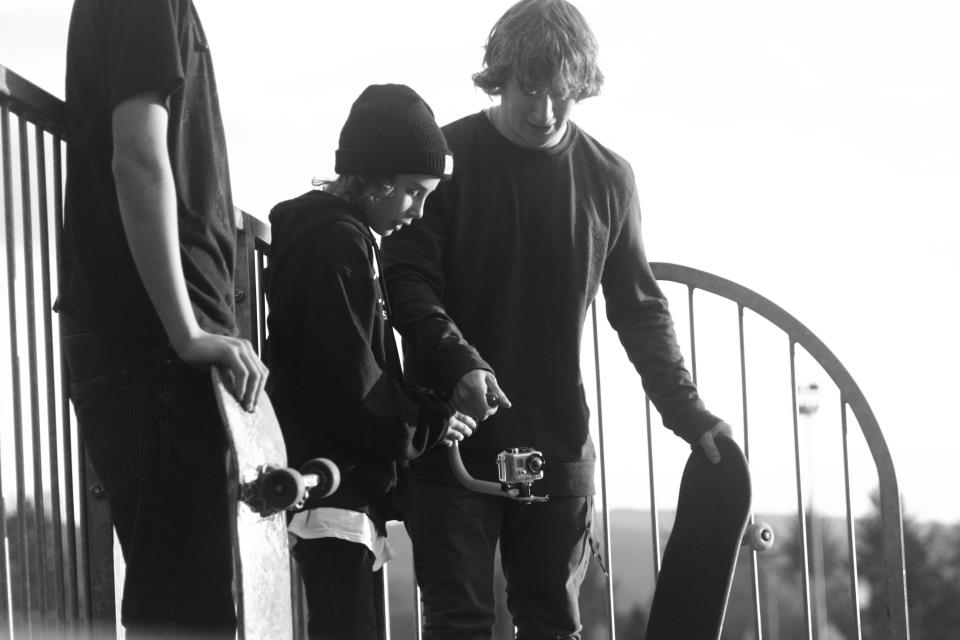Snowboarder Simon Andrews waxes lyrical over his favourite bit of kit, the GoPro Hero camera.
GoPros are the camera of choice for surfers and snowboarders, and these bad boys have been steadily gaining popularity over the last few years in the outdoor sports market. For this review I am going to focus on using the camera for winter sports.
Out of the box, the Hero comes ready charged and good to go. All you need to do is plug in a SD card and you’re away.
On the front of the camera is a little screen. Here it shows what to someone who hasn’t read the instructions thoroughly is just code. This jumble of numbers and letters are all the functions and settings available to you. It’s not just about pointing and shooting video – there’s a time lapse function, a single shot mode, burst mode and a timer function for group pictures. Navigating through all these modes and settings can take a bit of getting used to, and lots of consulting the instruction manual is recommended.
Once you have the camera up and running and have got used to the menus, things start to get exciting. The camera comes with a waterproof housing made of super strong polycarbon, which is waterproof to 60ft and tough enough to deal with all the punishment I have given mine – It’s been dropped in snow and a pint of beer, kicked around and been subjected to many many forms of water abuse and temps of -30. The lens housing also doesn’t get clogged up with snow and sheds water very easily, unlike some of the camera’s rivals.
MOUNTS:
Go Pro sell many different mounts for the camera, from simple helmet mounts to large suction cups for attaching it to surfboards. I own the tripod mount and the handle bar mounts. The latter is great for mounting the camera onto ski poles for point of view shots of the rider, whilst the tripod (as the name would suggest!) adapts the GoPro fitting to a standard tripod mount, which is awesome for filming time lapses.
I also use the latter for my homemade steady handle which is really useful for filming skateboarding and other people. The mounts are all made of good quality plastic and breakages seem rare, however if you’re riding through trees it’s worth having the camera tied to a bit of string in case a low branch swipes it off!
IMAGE QUALITY:
The image quality is, in short, amazing. The 1080p full HD gives super crisp clear images full of colour, and in tests the camera rivals many multi thousand pound pro level HD cameras. There are a few other modes such as 960p, meaning you can take advantage of the massive 170 degree wide angel, whist in the 720p mode you can film with 60fps (frames per second) for those super smooth slow motion shots.
The camera performs very well in all daylight conditions. At night it’s a little dark, but nothing that can’t be fixed with a few clicks in the editing process. The sound is a little jittery, but very good considering the size of the camera, and there’s an upgrade in the new model for external mikes.
One of my favourite shooting modes is the time-lapse function. The camera can be programmed to take pictures between every second to every minute, and then left. The result are beautiful, massively high res time lapses.
SUMMING UP:
Basically, the GoPro is a great bit of kit. It’s a massively versatile, tough and reliable camera, offering stunning quality and with loads of upgrades available. The controls take a little while to master, but once you’re used to them you fly. Iit’s also great value for money – To buy this kind of image quality in regular video cameras you would have to pay at least triple the price.
THE PROOF:
Check out Simon’s awesome 2011/2012 season edit!
By Simon Andrews
